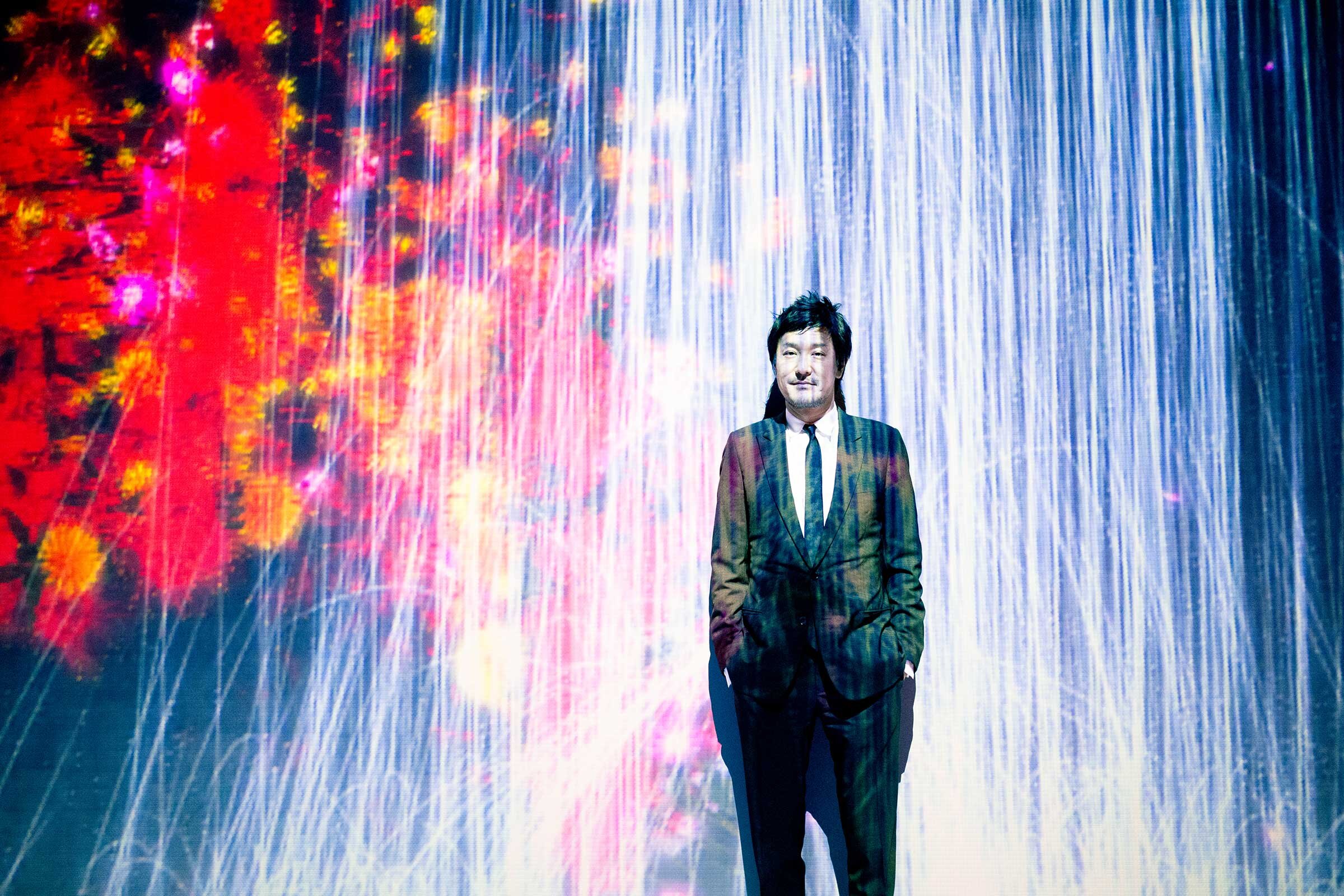Beyond the Physical with TeamLab

Japanese collective teamLab has taken digital art to a new level in a dedicated space in Tokyo
‘We consider art to be unexplainable.’ So says Toshiyuki Inoko, who knows a thing or two about the subject given that he’s at the helm of an apparent digital revolution within the contemporary art world. Inoko is the founder of teamLab, a fast-growing Tokyo-based collective of ‘ultratechnologists’ who are blazing a trail with imaginative installations that are as visually immersive as they are technologically complex.
Since Inoko formed teamLab with a small group of friends in 2001, it has expanded exponentially: today, it is represented by Pace Gallery, and hundreds of in-house specialists create digital artworks that are exhibited across the globe, from Helsinki to Singapore. But perhaps the most impressive showcase of their work can be found closer to home, at mori Building digital art museum: teamLab Borderless in Tokyo, which opened last June and attracted more than a million visitors within its first six months.
The world’s first museum devoted to digital art, it is housed in a dark-walled former games arcade in Odaiba on Tokyo Bay, spanning two levels and 10,000 square metres of space. Stealing the show are, of course, the dizzyingly immersive art installations: there are 50 of them in total, roughly categorised into five sections, powered by a network of 520 computers and 4 70 projectors. Visitors can stand beneath waterfalls, immerse themselves in a field of flowers, wander through rice fields and be hypnotised by painstakingly recreated Hokusai-style blue waves rolling endlessly around them. They can also draw their own maritime creatures before setting them free, bounce in a galaxy of planets and drink a cup of ceremonial tea that explodes into a rainbow- bright burst of flower petals on touch. In short, it’s a million miles from the conventional concept of appreciating two-dimensional art within the sedate confines of a white-walled gallery.
‘Artworks move out of the rooms freely, form connections and relationships with people, communicate with other works, and influence and sometimes intermingle with each other,’ explains Inoko. ‘We want to enhance the physical space itself via digital art.’ The viewer plays a key role in this experience. ‘By digitising the space, we can indirectly change the relationships between the people inside. It doesn’t necessarily have to be you who intervenes with it, it can be other people. If a person triggers the space to change, they indirectly become part of the artwork. And if that change is beautiful, the presence of others can be something beautiful as well.’
According to Inoko, the paradigm in traditional art has been to treat the existence of other viewers as a nuisance. ‘But in our exhibitions we encourage people to think of the presence of other viewers as a positive factor,’ he says.
And luckily for teamLab’s global fans, there’s more to come: in addition to numerous exhibitions soon to open around the world, a new digital space is expected to launch in Brooklyn later this year while an ambitious Crystal Forest project is also underway in Shenzhen, China.
Text / Danielle Demetriou















